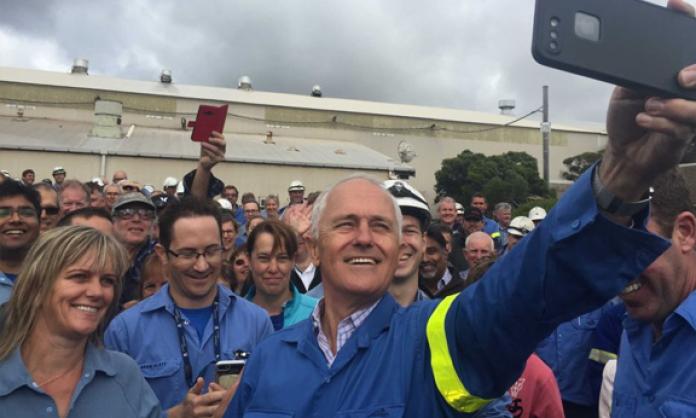“Never had it so good”, read a 4 March headline in Melbourne’s Herald Sun. Natasha Bita, the author of the piece, noted the “Lucky Country lifestyle for working Australians”. “Even moaning Millennials are on a good wicket”, she said.
There is a certain truth to all this. But there’s also a pile of fiction.
The Australian economy has undergone the second-longest economic expansion of any industrialised country, ever – just shy of the Netherlands’ 103 quarters of growth between 1982 and 2008. In the midst of this growth, we have experienced the biggest mining boom in world history. The emerging natural gas boom is also set to be one of history’s largest.
The east coast construction boom dwarfs anything Australian cities have previously experienced. Take this extraordinary figure from consultancy firm Rider Levett Bucknall: in the September quarter last year, there were 528 cranes working above apartment blocks in Sydney, Melbourne and Brisbane – 109 more than “in the residential construction game across major North American cities including New York, Boston, Chicago, San Francisco, Los Angeles, Toronto and up to Calgary”.
In the 26th year of economic expansion, corporate earnings are at all all-time high. Company profits surged by 20 percent in the last quarter and are expected to top $100 billion at the end of the 2016-17 financial year. “The … results confirm that corporate Australia is in good shape”, CommSec senior economist Savanth Sebastian told the Sun.
It’s as good as it gets. But what do we get? Wages are down by 0.5 percent in the last quarter and now the Fair Work Commission has imposed the greatest wage cut since the Great Depression, when the Arbitration Court slashed the Basic Wage by 10 percent.
We are living through one of the greatest periods of material prosperity in the history of humanity: real net national disposable income per capita has grown from $33,000 in 1991-92 to $54,000 in 2015-16. Yet the attacks have come think and fast.
Never had it so good: but we got the Howard government’s Workplace Relations Act and an all-out assault on the Maritime Union. We got the regressive goods and service tax. We got endless campaigns against “dole bludgers” and minimum wage rises, while the dole and the minimum wage fell further and further behind average weekly earnings. We got penalty rate cuts, “award restructuring” and increasing casualisation and precarity of employment. We got WorkChoices, the Gestapo-like Australian Building and Construction Commission and individual Australian Workplace Agreements.
Never had it so good: but we got an increase to the pension age. We got the degradation of public schools and larger class sizes. We got an increasingly user-pays health system and the undermining of Medicare. We got the outsourcing of sections of the Department of Human Services, so that private companies could make millions out of the misery of the unemployed.
Never had it so good: but residential property prices were pushed far out of the reach of many people, while public housing declined. In Melbourne, the proportion of affordable housing stock has fallen from 27 percent to just 8 percent over the last decade. Sydney is the second most unaffordable city in the world. And more than one in five mortgage holders nationally are in financial stress even though interest rates are at record lows.
Never had it so good: but we got the massive assault of Tony Abbott’s 2014 federal budget, which was an attempt to destroy pensions and Medicare as we know them. Aboriginal people were told that their communities are “unviable”. Students were told they should go into debt for life to get a university degree.
What did the rich get? They got a reduction in the company tax rate from 49 percent in 1986 to 30 percent today. They got a reduction in the top individual tax rate from 57 percent to 45 percent. They got superannuation tax concessions worth tens of billions of dollars a year. Executives got a 250 percent pay increase between 1993 and 2007. In the boom years 2004 to 2012, the richest 20 percent of the population got a 28 percent increase in their wealth (for the bottom 20 percent, wealth grew by only 3 percent). In the last 10 years, public funding to their private schools increased by 10 percent (for public schools it grew by little more than 3 percent).
“The history of all hitherto existing society is the history of class struggles”, wrote Karl Marx and Frederick Engels in the first chapter of the Communist Manifesto. “Oppressor and oppressed stood in constant opposition to one another, carried on an uninterrupted, now hidden, now open fight.” The words have not lost their relevance.
Now just think. This is what the class war looks like in the best of times: capitalists are making more money than ever, but they demand ever greater sacrifices from workers. Industrial struggle is at an all-time low, but they demand ever greater “restraint” from unions.
What sort of class war should we expect from these parasites when the good times run out? We’ll likely find out soon enough.








